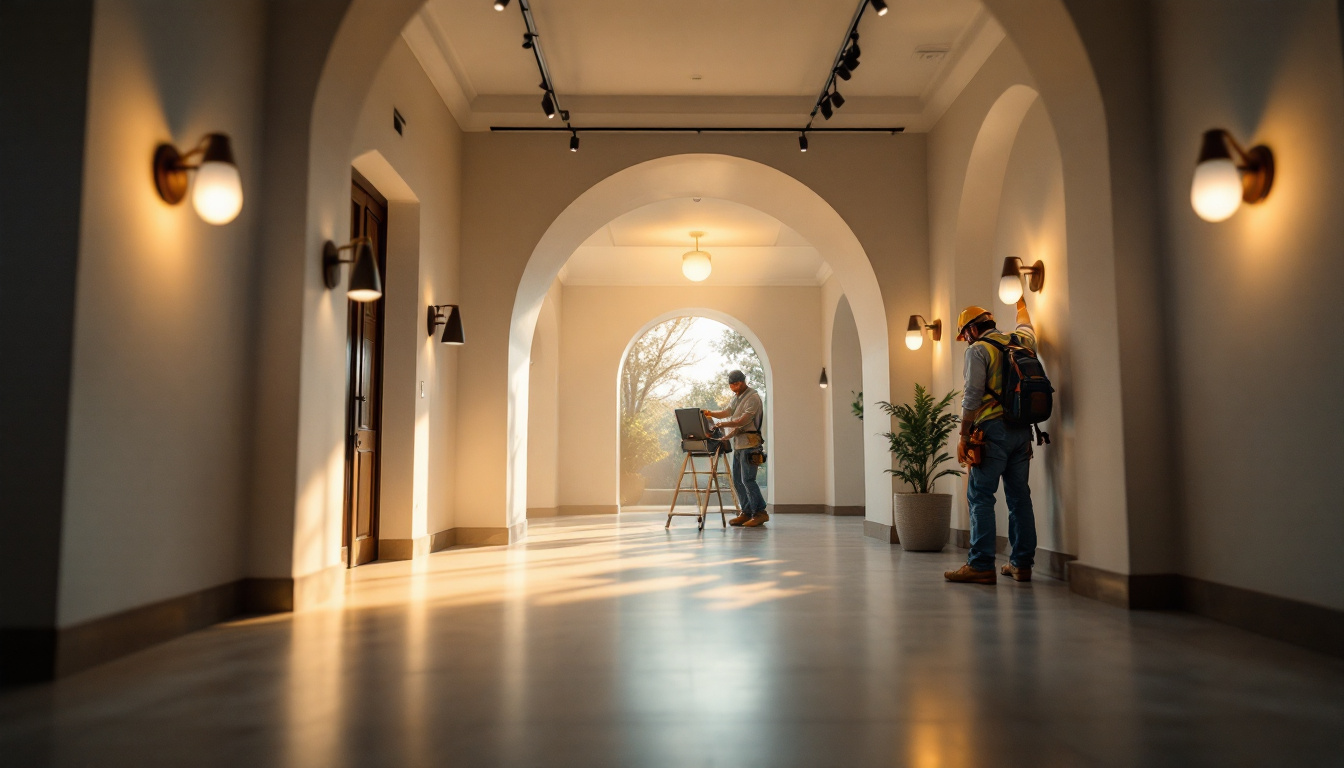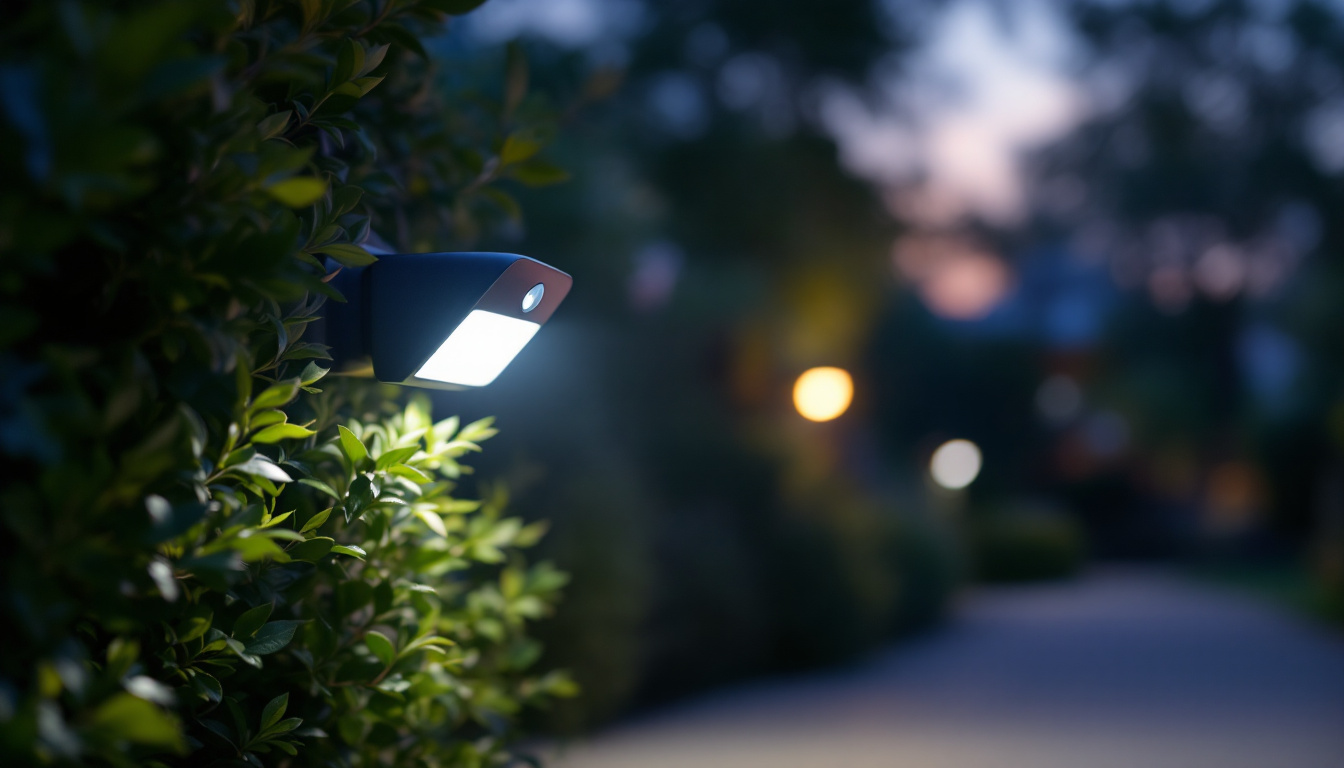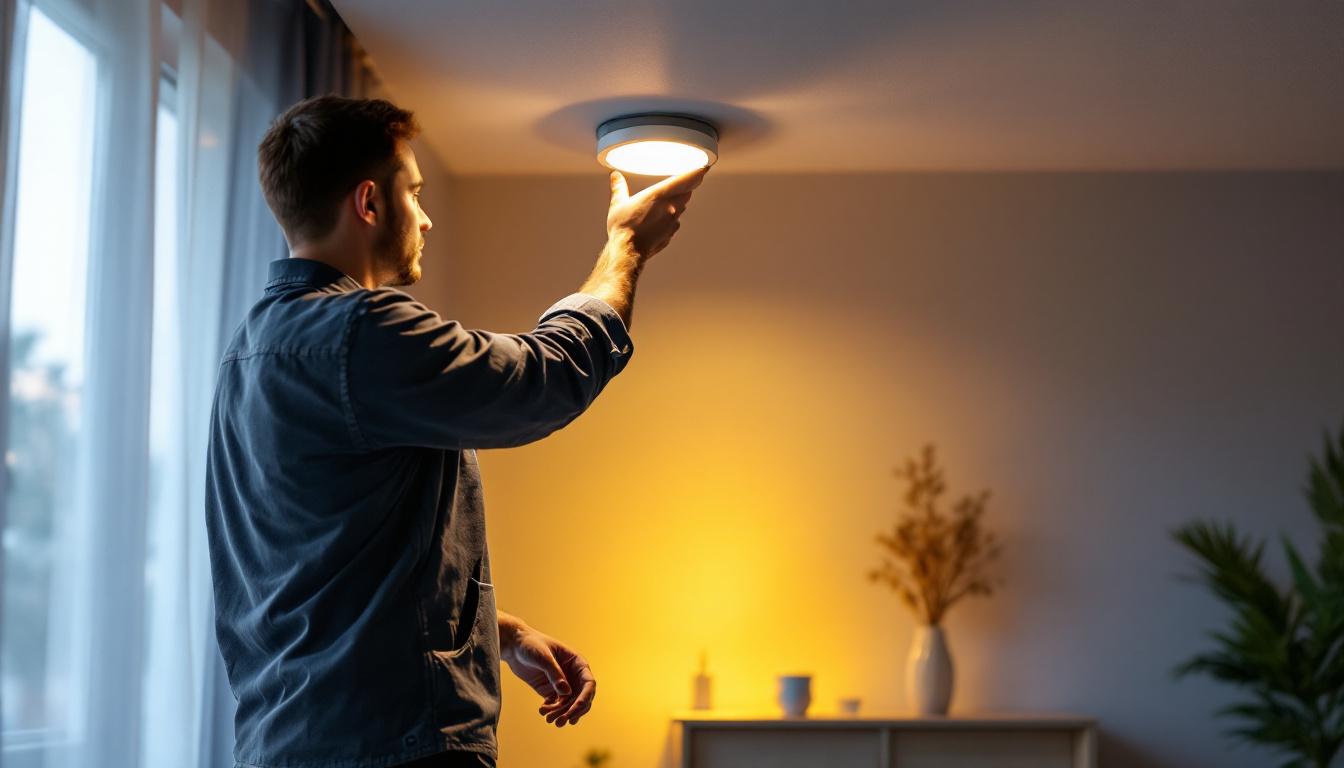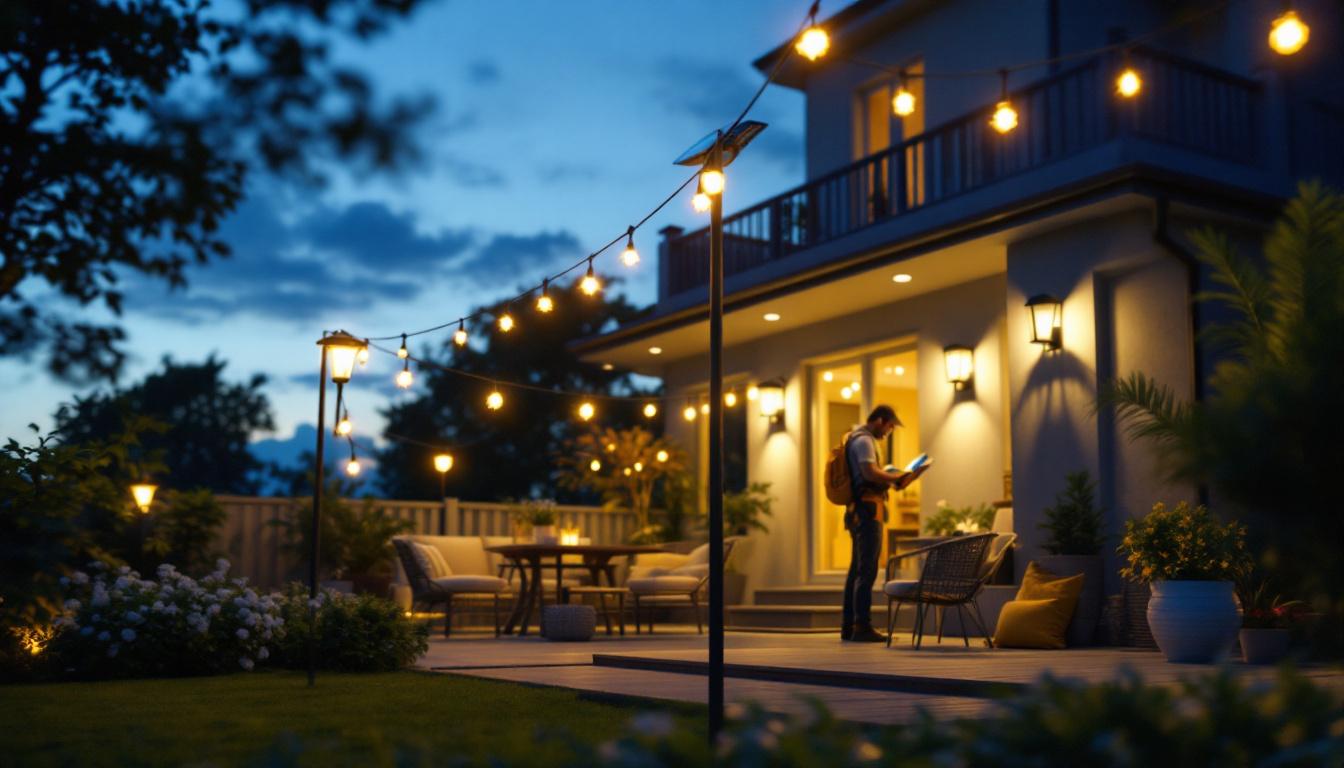
Entrance lighting plays a crucial role in enhancing the aesthetic appeal and safety of a property. For lighting contractors, understanding the significance of this aspect can lead to better project outcomes and satisfied clients. Properly designed entrance lighting not only illuminates pathways and doorways but also sets the tone for the entire property. The right lighting can transform a mundane entrance into a stunning focal point, inviting guests and creating a sense of warmth and welcome. This transformation is particularly important in residential areas where first impressions can significantly influence perceptions of the home.
Moreover, well-placed lights can deter potential intruders, making homes and businesses feel more secure. Clients often underestimate the impact of entrance lighting, which can lead to missed opportunities for contractors to showcase their expertise and creativity. By integrating smart lighting solutions, such as programmable systems that adjust brightness based on the time of day or occupancy, contractors can provide clients with innovative options that enhance both functionality and aesthetic appeal.
One of the primary functions of entrance lighting is to provide safety. Poorly lit entrances can lead to accidents, while well-lit areas can help prevent falls and trips. Lighting contractors should emphasize the importance of adequate illumination in high-traffic areas, ensuring that clients understand the potential risks associated with inadequate lighting. For example, illuminating steps, ramps, and uneven surfaces can significantly reduce the likelihood of accidents, especially for elderly residents or guests with mobility challenges.
Additionally, security is a significant concern for many property owners. Entrance lights can act as a deterrent to crime by eliminating dark spots where intruders might hide. Contractors can recommend motion-activated lights or low-level ambient lighting to enhance security without creating harsh glare. Furthermore, incorporating smart technology, such as security cameras with integrated lighting, can provide an added layer of protection, allowing homeowners to monitor their property remotely and respond to any suspicious activity in real time.
Beyond safety and security, entrance lighting contributes to the overall aesthetic of a property. Thoughtfully designed lighting can highlight architectural features, landscaping, and other elements that enhance curb appeal. Contractors should consider the style of the property and the preferences of the client when selecting fixtures and placements. For instance, modern homes may benefit from sleek, minimalist fixtures, while traditional properties might call for ornate lanterns or vintage-style sconces that complement the architecture.
Using a combination of ambient, task, and accent lighting can create a welcoming atmosphere. For instance, pathway lights can guide visitors safely to the entrance, while wall sconces can add character and warmth to the façade. Understanding the interplay between different types of lighting can help contractors deliver a cohesive design. Additionally, seasonal lighting options, such as soft white lights for winter holidays or colorful accents for summer gatherings, can further enhance the entrance’s charm and adaptability throughout the year, making it a versatile space for entertaining and welcoming guests.
Despite the clear benefits of effective entrance lighting, several common issues can arise during installation. Awareness of these potential pitfalls allows lighting contractors to proactively address them, ensuring a smoother process and better results.
One of the most frequent issues encountered is inadequate planning. Many contractors may rush into a project without thoroughly assessing the site or discussing the client’s needs. This can lead to poorly placed fixtures, insufficient lighting levels, or even lighting that clashes with the property’s design.
To avoid this, contractors should conduct a comprehensive site analysis. This includes evaluating existing light sources, understanding the layout of the property, and discussing the client’s vision. A well-thought-out plan can help prevent costly mistakes and ensure that the final design meets the client’s expectations. Additionally, incorporating advanced lighting design software can aid in visualizing the project, allowing clients to see potential outcomes before installation begins. This not only enhances client satisfaction but also fosters a collaborative environment where ideas can be exchanged freely.
Another critical aspect that contractors must consider is local regulations regarding outdoor lighting. Many municipalities have specific guidelines related to light pollution, fixture types, and even the brightness of lights. Ignoring these regulations can lead to fines and the need for costly adjustments post-installation.
Contractors should familiarize themselves with local codes and regulations before starting a project. This not only helps avoid legal issues but also positions the contractor as a knowledgeable professional who prioritizes compliance and community standards. Furthermore, staying updated on evolving regulations can provide contractors with a competitive edge, as they can offer solutions that are both innovative and compliant. Engaging with local zoning boards or attending community meetings can also provide insights into upcoming changes in regulations, allowing contractors to adapt their practices proactively.
Implementing best practices during installation can significantly reduce the likelihood of issues arising. By following a structured approach, lighting contractors can ensure that their projects are successful and meet client expectations.
The selection of fixtures is a critical component of entrance lighting. Contractors should consider factors such as the style of the property, the intended use of the space, and the desired ambiance. For example, a modern home may benefit from sleek, minimalist fixtures, while a traditional property might call for ornate designs.
Energy efficiency is another important consideration. LED fixtures are becoming increasingly popular due to their longevity and lower energy consumption. Contractors should educate clients about the benefits of energy-efficient lighting options, which can lead to long-term savings and a reduced environmental impact. Additionally, smart lighting systems can offer enhanced control, allowing homeowners to adjust brightness and color temperature based on their preferences or time of day, further enhancing the entrance’s functionality and appeal.
Placement is key to achieving effective entrance lighting. Lights should be positioned to illuminate pathways, doorways, and any potential hazards without causing glare or discomfort. Contractors should also consider the height of the fixtures, as lights placed too high may not provide adequate illumination, while those placed too low can create shadows.
Using a combination of lighting types can enhance both functionality and aesthetics. For instance, path lights can guide visitors safely to the entrance, while wall-mounted fixtures can provide additional illumination and highlight architectural features. A layered approach to lighting allows for flexibility and creativity in design. Incorporating motion sensors can also be a valuable addition, providing security and convenience by activating lights when someone approaches the entrance, thus ensuring that the area is always well-lit when needed.
Once installation is complete, testing the lighting is essential. Contractors should assess how the lights perform at different times of the day and under various weather conditions. This step is crucial for identifying any areas that may require adjustments or additional lighting.
Encouraging client involvement during this phase can also be beneficial. Clients can provide feedback on the lighting’s effectiveness and ambiance, allowing contractors to make any necessary changes before finalizing the project. This collaborative approach fosters trust and satisfaction. Furthermore, providing clients with a maintenance plan can help ensure that their entrance lighting remains functional and visually appealing over time. Regular checks and updates on bulb replacements, fixture cleaning, and adjustments can enhance the longevity and performance of the lighting system, ensuring that the entrance continues to make a positive impression for years to come.
Proper maintenance of entrance lighting systems is vital for ensuring longevity and optimal performance. Educating clients about maintenance can enhance their satisfaction and reduce the likelihood of issues arising in the future.
Encouraging clients to conduct regular inspections of their lighting systems can help identify potential problems early. This includes checking for burnt-out bulbs, damaged fixtures, and any obstructions that may affect light output. Regular maintenance not only prolongs the life of the fixtures but also ensures that the lighting remains effective.
Contractors can offer maintenance services or provide clients with a checklist to follow. This proactive approach can prevent minor issues from escalating into significant problems, ultimately saving clients time and money.
Seasonal changes can impact the performance of entrance lighting systems. For instance, snow and ice can obstruct lights, while heavy rain can affect electrical components. Contractors should advise clients on how to prepare their lighting systems for different weather conditions.
Additionally, clients should be reminded to adjust their lighting as seasons change. For example, during winter months, more light may be needed to combat shorter days, while summer might allow for more ambient lighting to create a welcoming outdoor space for gatherings.
Entrance lighting is a vital aspect of any property, providing safety, security, and aesthetic appeal. For lighting contractors, understanding the importance of this element can lead to successful projects and satisfied clients. By being aware of common issues, implementing best practices, and emphasizing maintenance, contractors can deliver exceptional entrance lighting solutions.
Ultimately, the goal is to create a well-lit entrance that not only meets the functional needs of the property but also enhances its overall charm. By prioritizing thoughtful design and execution, lighting contractors can avoid pitfalls and establish themselves as trusted professionals in the industry.
Ready to elevate your entrance lighting projects with the finest selection of spec-grade lighting products? Look no further than LumenWholesale, where we offer an extensive range of high-quality lighting solutions at unbeatable wholesale prices. Say goodbye to middleman markups and hello to superior products that meet the highest industry standards. With free shipping on bulk orders, you can ensure your projects shine brightly without breaking the bank. Don’t compromise on quality or value—Wholesale Lighting at the Best Value is just a click away. Partner with LumenWholesale today and experience the perfect blend of quality, affordability, and convenience.

Discover everything lighting contractors need to know about motion detector sensor lights in this comprehensive guide.

Discover how recessed LED pot lights are revolutionizing the lighting industry, offering contractors innovative solutions for efficiency, aesthetics, and energy savings.

Discover how solar outdoor patio lights can revolutionize the way lighting contractors operate, offering significant savings in both time and money.

Discover the ins and outs of fluorescent bulbs with our comprehensive guide tailored for lighting contractors.